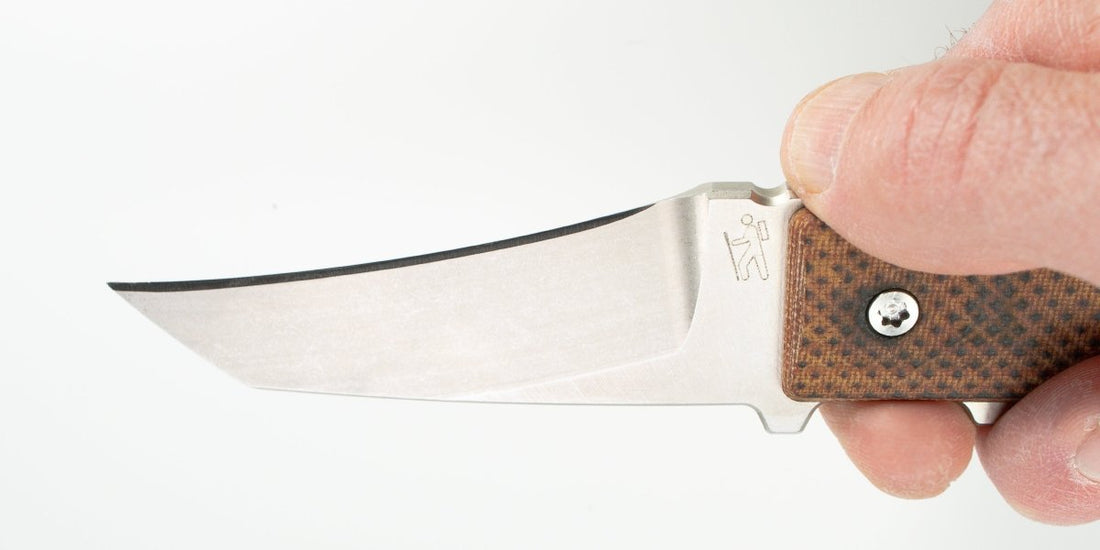The sharpening angle and the thickness behind the edge are critical factors that influence the performance of a knife, shaping its cutting efficiency, durability, and ease of maintenance. The sharpening angle determines how fine or robust the cutting edge is, while the thickness behind the edge impacts how easily the knife moves through materials and its overall structural integrity.
A thinner edge combined with a lower sharpening angle produces an exceptionally sharp blade capable of precise, clean cuts, making it ideal for tasks requiring finesse. However, this comes at the cost of reduced toughness, as such edges are more prone to chipping or rolling under heavy use or when encountering harder materials. On the other hand, a thicker edge paired with a steeper sharpening angle enhances the knife's durability and resistance to wear but sacrifices some slicing efficiency and the ability to create a fine, hair-splitting edge.
At Dauntless Manufacturing, most knives are sharpened at an 18-degree angle. This angle has been carefully chosen as it offers the best combination of edge retention, toughness, and versatility. It allows the knives to perform well across a wide range of tasks, from fine detail work to rugged outdoor use, without compromising durability or requiring excessive maintenance.
While 18 degrees is the standard sharpening angle for Dauntless knives, there are notable exceptions. The Dogbone-K, for instance, is sharpened at 19 degrees, providing a slightly more robust edge to handle the demands of its compact design and the tasks it is typically used for. Additionally, the early production Hiker Tanto models featured a specialized sharpening approach, with the tip sharpened at a steeper 22-degree angle. This adjustment enhanced the tip's strength and resilience, making it better suited for piercing and heavy-duty tasks where the tip could encounter high stress.
These variations highlight Dauntless Manufacturing's commitment to tailoring edge geometry to the specific design and intended use of each knife, ensuring optimal performance and user satisfaction. Whether it’s the standard 18-degree edge or a specialized variation, each angle reflects a thoughtful balance of sharpness, toughness, and functionality.

